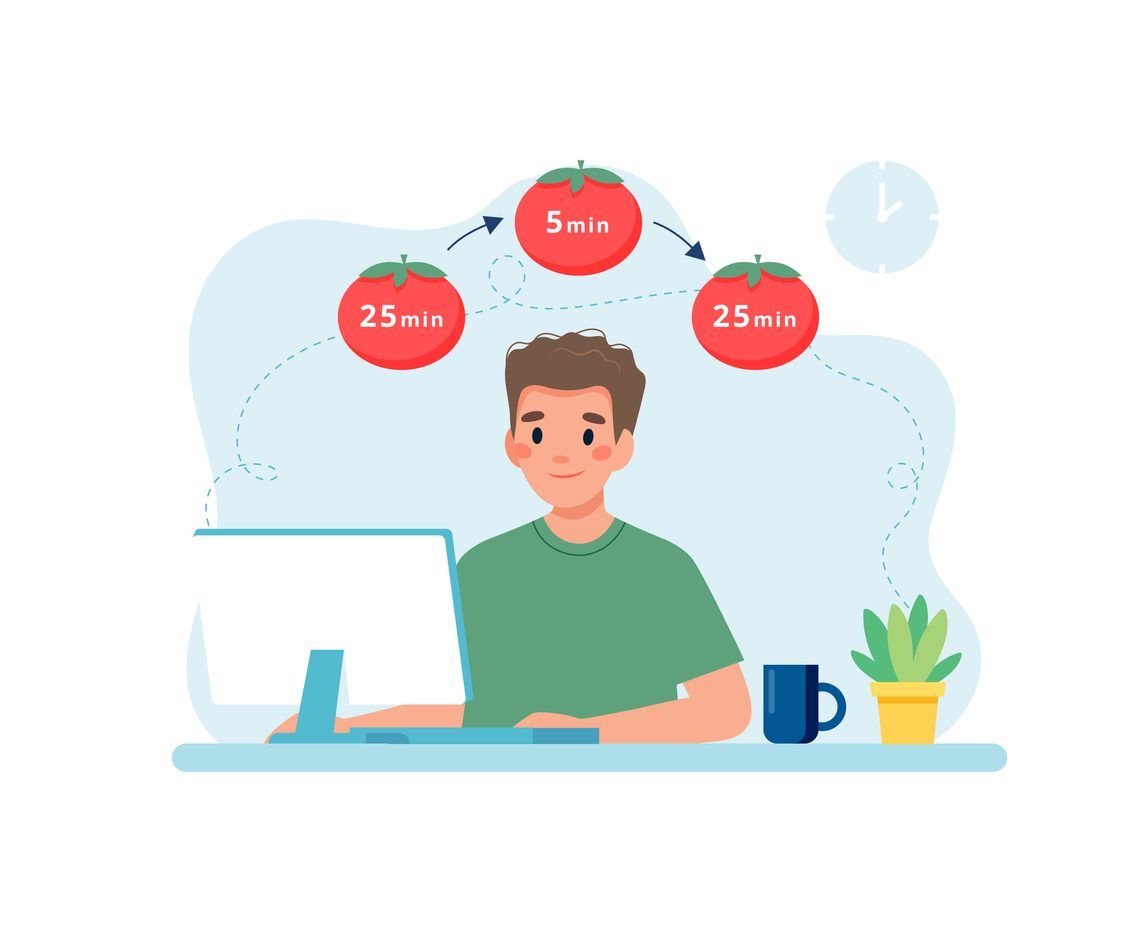The Pomodoro technique for studying: a duo for success
Do you ever feel that, despite the time you spend studying something, you're not making progress quickly enough? Well the thing is, sometimes, less is more. In other words, it can prove more beneficial to dedicate a limited amount of time to a task, but concentrate on it fully, than spending the whole day focussing on something with all the distractions that can arise. This time optimisation is what the Pomodoro technique for studying is all about - a technique to become more efficient at any objective you set for yourself, in both your academic and work life.
Nowadays, people are constantly at threat from what is known as "time thieves”. A buzzing phone, a call, a colleague who comes into the room to say hello, emails that pop up in your inbox.... all of these mean your concentration is constantly flickering between one thing and another, and as a result, your performance is reduced.
While it might seem to you that you're only losing seconds on these intrusions, reality shows otherwise. In fact, did you know that every time you switch focus from one activity to another, even if it's looking to see who's sent you a new WhatsApp, you need at least 120 seconds - i.e., 2 minutes - to 100% refocus on what you were doing? In this regard, according to the report Multitasking: Switching costs by the American Psychological Association, multitasking can reduce productivity and efficiency by up to 40%.
What is the Pomodoro technique for studying?
This time management problem is exactly what Francesco Cirillo, a young Italian university student, was facing. Tired of procrastinating, he developed an effective technique to improve concentration and maximise results. Thus, at the end of the 80s, he created the Pomodoro technique for studying, although its simplicity and usefulness makes it extendable to any professional field.
The idea is simple. Just divide your time into 25-minute intervals called "pomodoros". During this time, you should concentrate on one single task only, after which you can take a five-minute break. This cycle can be repeated up to four 'pomodoros', then you take a longer 15-30 minute break.
How effective is the Pomodoro technique for studying?
Research has shown that, thanks to this technique, you can completely focus on one single mission, allowing you to make the most of your time and avoid mistakes, by removing any distractions from your environment. Likewise, you also exploit your peak brain performance with controlled study breaks.
Remember that a person's ability to concentrate lasts on average 45-50 minutes, after which, your productivity plummets. And let’s not forget that, as Parkinson's Law states, "work expands to fill the time allotted for its completion". Thus, the fact you feel "timed" makes you faster at learning, because you're better at calculating the actual dedication each task requires.
Moreover, applying the Pomodoro technique to studying will also bring benefits on an emotional level. A study published in Frontiers in Psychology in 2019 found that the Pomodoro Technique can also help reduce the stress and mental fatigue associated with prolonged study, as well as improving the quality of students' sleep. At the same time, by being more productive, you will feel more motivated and be able to tackle even more ambitious goals. And don't forget that this strategy helps you to better enjoy your free time, in turn boosting your happiness.

How to study using this time management technique
To optimally apply the Pomodoro technique for studying, you need to follow a few simple steps that guarantee the effective planning and successful execution of the method. What to bear in mind:
- Define the task. The first step in applying the Pomodoro technique for studying is identifying the task you want to perform. It's important to remember that this is a technique that focuses on a specific task, so a clear and defined task should be chosen. For example, rather than attempting to study a topic in general, you should set specific goals, such as memorising two points from the topic in each pomodoro.
- Get rid of all distractions. The key for this technique to work is to maximise concentration during each pomodoro. To do so, it's vital to ensure you study in a quiet place free from distractions. There are several apps to avoid mobile phone or computer notifications, such as Stay Focused or Freedom, which block alerts for however long you allocate.
- Start the timer. Once you've set your goals and prepared the study space, set the timer to a duration of 25 minutes and focus on the task assigned to that time span.
- Rest. To correctly apply the Pomodoro technique for studying, you have to take the 25-minute bursts of performance seriously, as well as the breaks, whether these are the five-minute ones between blocks or the 15-30 minutes after four sessions. Although you might find it difficult to take these breaks at first, it's important that you follow them in order to cement the study habit and get used to the pace it sets. Moreover, during this time, try to do activities that help you to escape your own mind, such as stretching, going out for a walk, or eating a snack.

Apps that use the Pomodoro technique for studying
To use the Pomodoro technique for studying, you can use any timer, from a smartwatch with alarm to the kitchen clock. However, if you're looking for a more specific solution, there are various apps based on this strategy that can come in handy.
Forest, Brain Focus, Focus Timer Reborn, for example, are all Pomodoro Technique apps for mobile, while Marianara, Focus To-do and FocusMe are all desktop extensions to use the technique on your computer. Additionally, these tools usually include extra features such as personalised locking options and statistics tracking for your work, which are an added bonus.
Whichever system you choose, if you try the Pomodoro technique for studying, you'll soon see the advantages it offers in your results, especially if you're the type who finds it difficult to concentrate, you procrastinate a lot, or are easily distracted. In this way, nothing ― not even laziness or a lack of time ― will prevent you from continuing to train throughout your entire academic and professional career.
However, what is really important is that each person knows which learning method allows them to acquire knowledge more quickly and effectively, and that teachers have the necessary pedagogical skills to support students in this process of identifying and applying the most appropriate learning methodology.
Do you want to develop professional skills that will help you access better job opportunities? Discover Santander Open Academy, the training space you need to keep growing.
Join our global platform for learning and professional development and access courses at zero cost, training content in a wide range of formats and scholarships from leading universities and institutions.
If, like us, you believe that we should never stop learning, sign up here and find out what we have for you!
Más posts interesantes que leer...
-
 22/07/2025 | Santander Universidades
22/07/2025 | Santander UniversidadesCrossing borders to study: new allies on the university journey
Card text -



